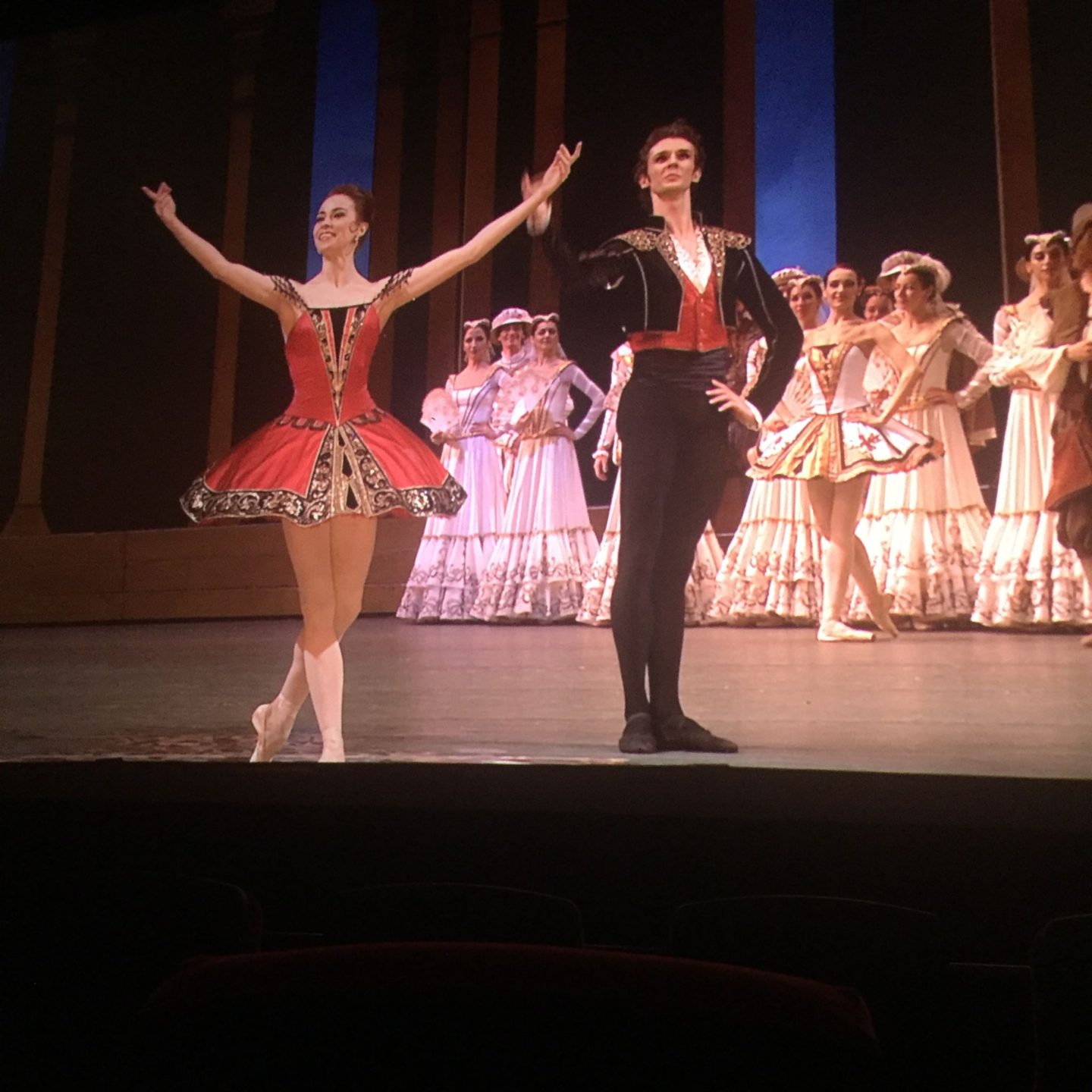
The fourth ballet in the Cineplex Ballet Season is a recording of the Bolshoi Ballet’s Don Quixote from a few seasons ago.
Years ago, when YouTube was just starting out, there were only a couple ballet videos posted. It was incredibly difficult to get recent footage of dancers, unless you had access to buying them on DVD. Ballet company’s online shops were either not available, or it was obscenely expensive to ship something. All that being said, one of the first videos I’d found was of Paloma Herrera and Angel Corella of American Ballet Theatre dancing the Act 3 Pas de Deux, with the variations and coda. With the short introduction before the performance, I immediately fell in love with Paloma, and then with the Don Quixote choreography. And though the footage is old, it has stood the test of time. To this day, this is one of my favourite versions, danced by some of my favourite dancers. This is where my love affair with Don Quixote started. I can’t tell you how many times I watched that video. Now, anytime I get the opportunity to see this ballet, I do.
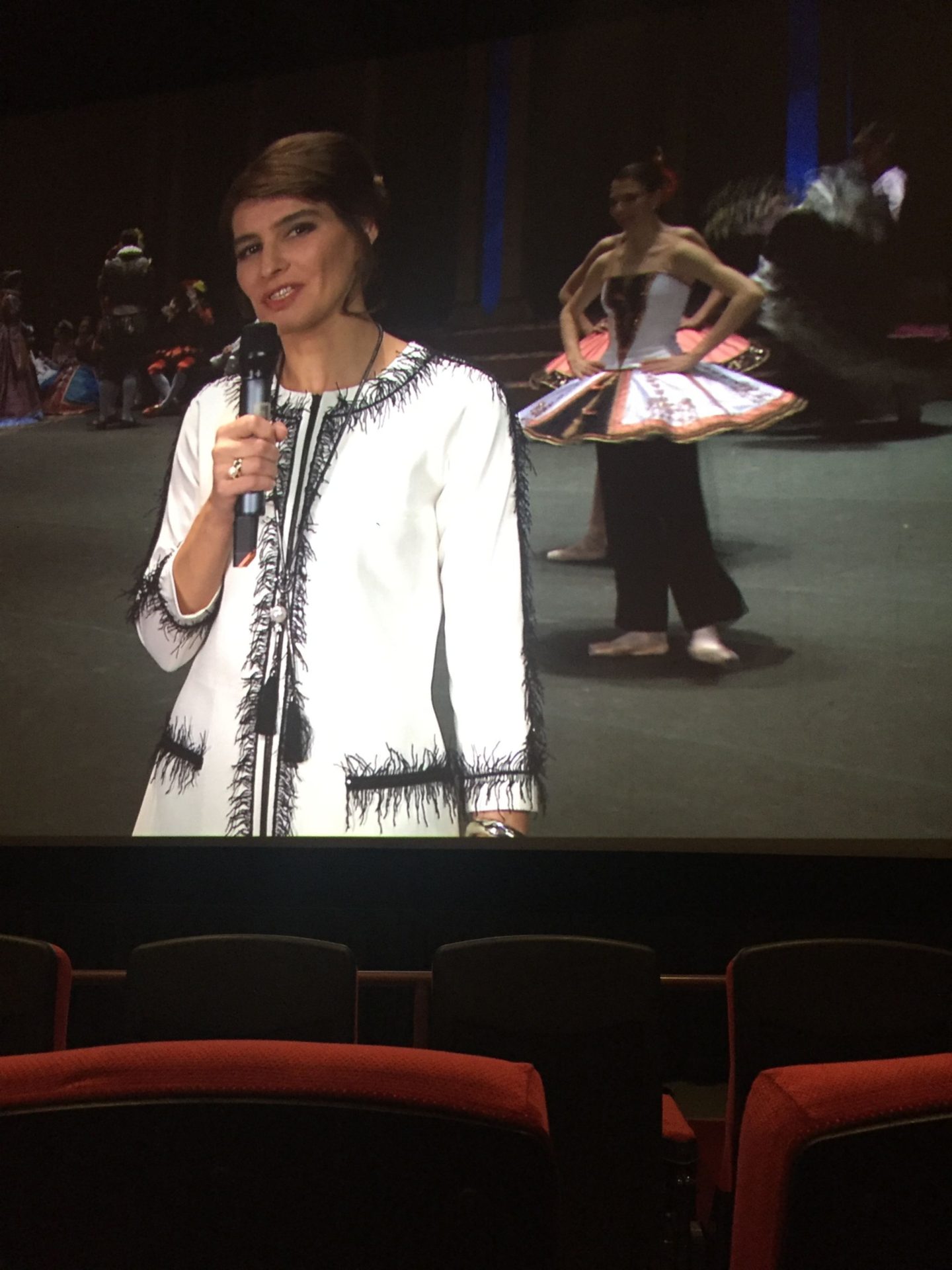
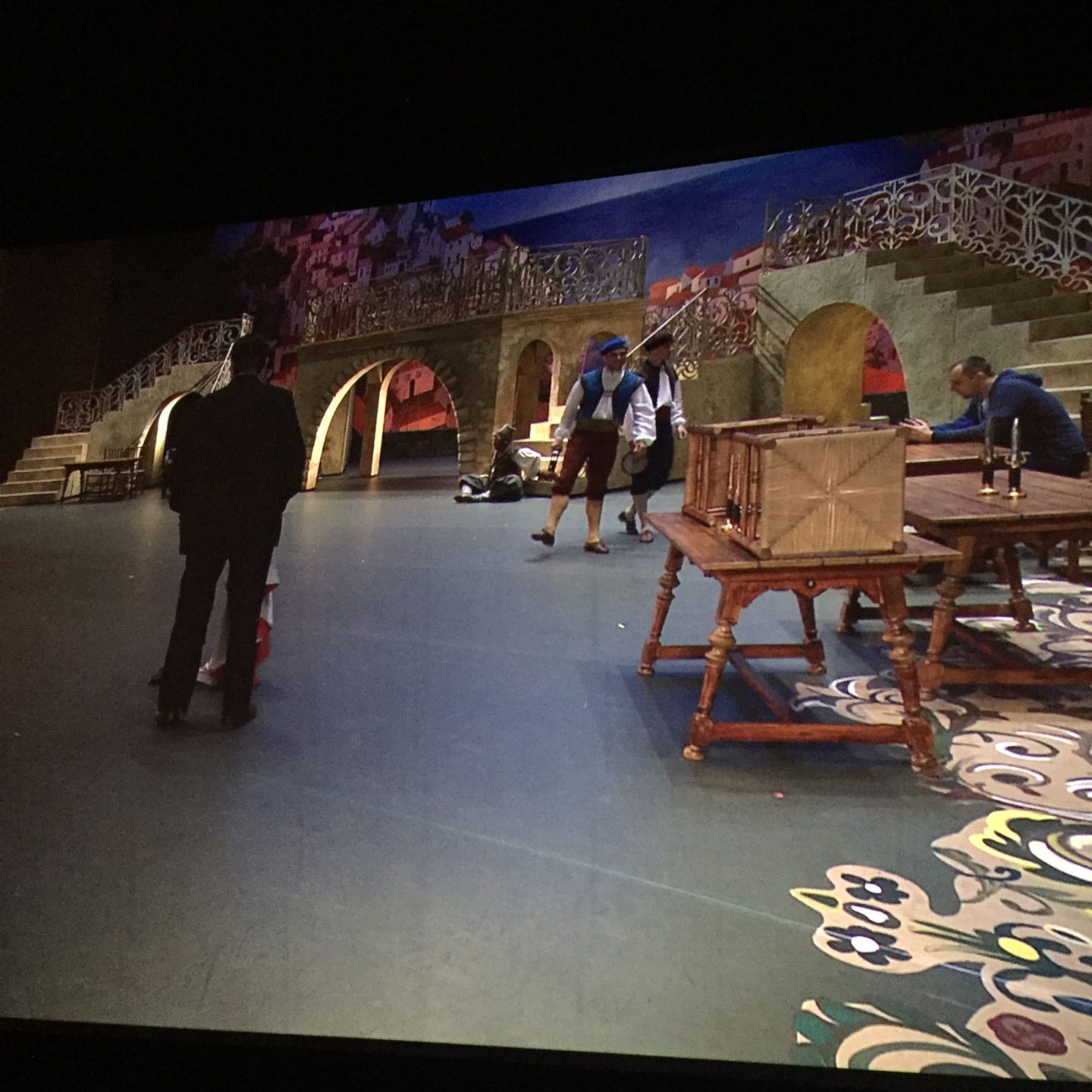
Yesterday was the first of two cinema relays by the Bolshoi. We were greeted by the lovely Katerina Novikova, whom went right into the history of this ballet. Don Quixote was the first big ballet created for the company, by Marius Petipa in 1869, whom was influenced by his time living in Spain. This is one of the Bolshoi’s largest, and most famous ballets. Two years later, Petipa added more classical elements to the ballet for the more classical audiences in St. Petersburg. This is why we now have the dream scene. Personally, I hadn’t known that this is how and why the dream sequence was added, but it makes sense. I had thought it was done so because most ballets of the time had a sort of dream sequence. It was a way of incorporating etherealism and I suppose a sense of magic. The version danced in the recording, and in the current repertoire of the Bolshoi was created in 1999. This recording was in the first season where they had brought it back onto the historic stage, and so it was filled with new scenery, props and costuming. As a small side note, the historic stage at the Bolshoi, which was redone a few years back, is a huge (and I mean 7-10 traps deep, huge) stage. I believe the flooring is unique to different ballets as I’ve seen the Sleeping Beauty flooring and the Don Quixote flooring which are quite different. Essentially, they have a pattern overlaying the traditional black carpet. It really is quite beautiful and adds something to the performance and the feeling of history in the theatre.

Prologue and ACT 1
The prologue was a humorous introduction to the ballet, though I felt it would have been better supported with a synopsis on screen, especially for first time viewers. Starting in Act 1, the ballet is big and boisterous, and incredibly well danced. The historic stage, and sheer number of dancers on stage, show very well the size of the crowd and how big, fun and energetic this ballet really is. When Don Quixote entered the scene on a live white horse, and his aid on a live Donkey, I couldn’t help but think of course the Bolshoi would have live animals on stage. The reality is that live animals are unpredictable, the situation is unstable, and so it’s generally much easier to put people in costume. There is no worries of the animal going to the bathroom on stage, or acting up and hurting someone. Especially since they’re a not even a tertiary character. It’s very plainly for show and to make it more realistic. And yes, it most definitely looks better than a bad horse costume, but there are plenty of other shows that have great animal costuming. All that being said, and the difficulties aside, this big famous ballet, made specifically for the company, on their historic stage, with live animals, all fits together well. I was not surprised in the least to see a horse and donkey on stage.
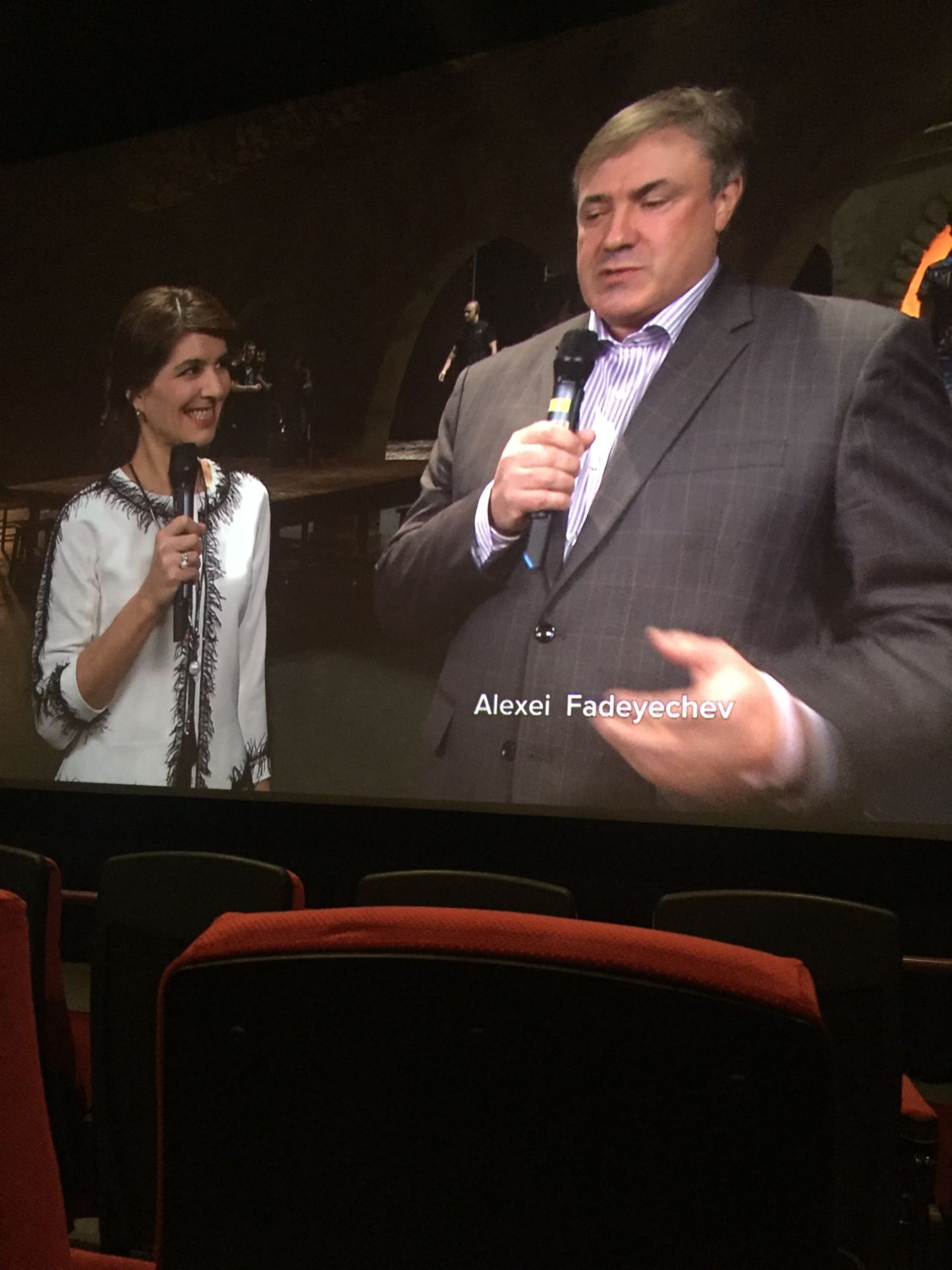
The First Intermission
The first intermission was an interview with Alexei Fadeyechev, whom choreographed the current version created in 1999. A quick and interesting conversation about updating the ballet for the historic stage. They did have the names of the interviewees on the screen during the interviews, which I really appreciated, as I like to do follow up research after the performance. Also, as a visual person, this makes it much easier for me to remember the name.
ACT 2
Act 2 is where we find the dream sequence. It starts off with more storyline building from Don Quixote, whom sees a puppet show and believes it to be real. When he tries to fight off the bad guys, he is driven a little mad and gets lost in the forest. There, he falls asleep and the dream sequence begins. The first part of the second act simply explains the dream sequence. The costuming in the dream sequence is especially beautiful. The icy blue colours add to that sense of other worldliness and work impeccably with the lighting on stage. Olga Smirnova was Queen of the Dryads in this performance, and just perfect for the role. There’s a really natural and regal tone to her in this part. Daria Khokhlova was cast as Cupid, whom also performed this role perfectly. With spritely energy, youth and joy, she absolutely became this character.
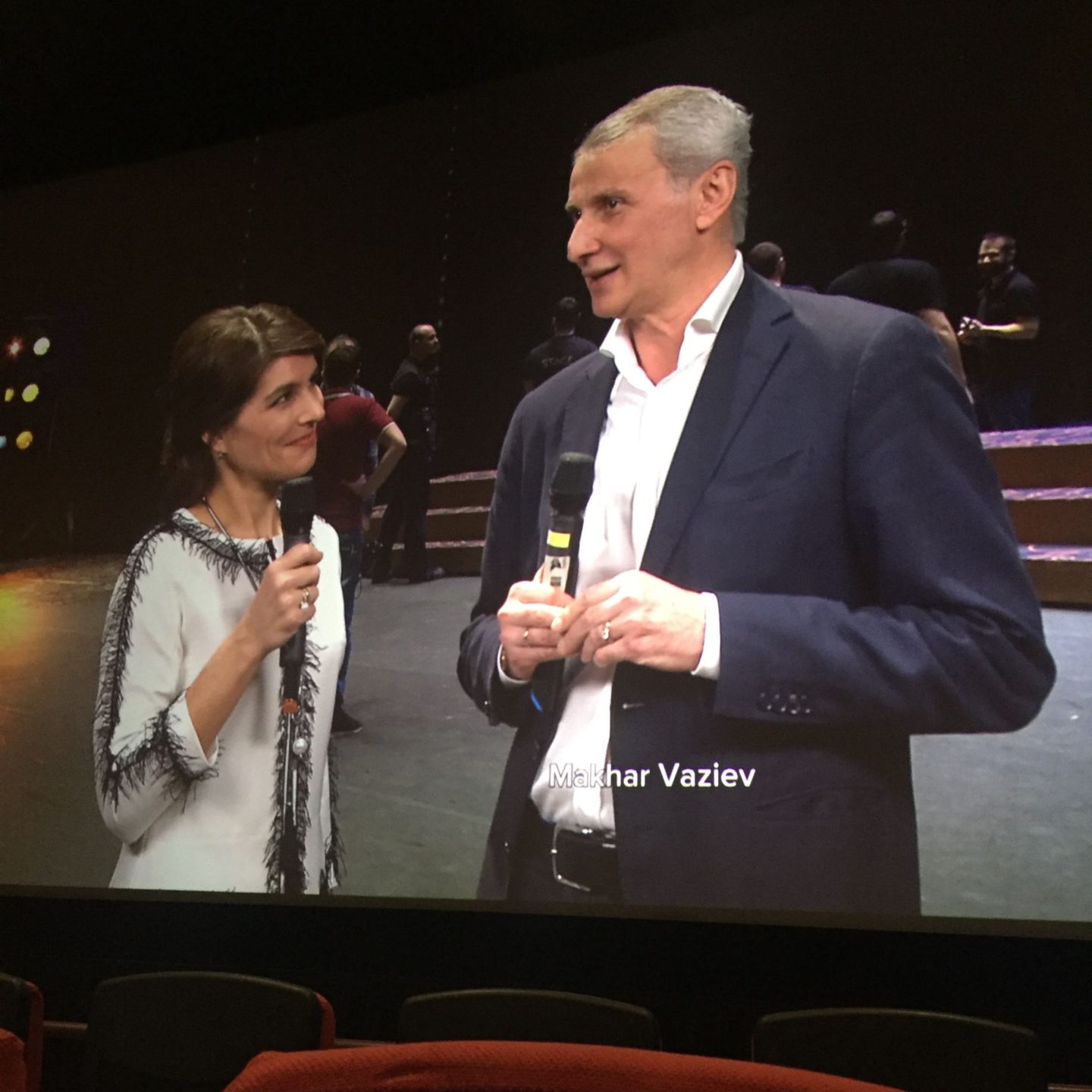
The Second Intermission
The interview in the second intermission was with Artistic Director Makhar Vaziev. The conversation included looking into the culture of Russian ballet with the differences between Moscow and St. Petersburg, and the long standing rivalry between the two. I like that this conversation delved more into the atmosphere of ballet in Russia, and thought that he was a good person to talk about this having trained, danced and lead the Mariinsky Ballet in St. Petersburg before coming to the Bolshoi in Moscow. Though his answer in the end was very diplomatic. Afterwards, with the camera in the lobby, I took a little more time to look at what the audience was wearing. Though no-one I saw was in a ballgown for this performance, the general consensus was smart casual. Men were wearing a dress shirt, sports coat and trousers, while women were generally wearing a nice jumper and black jeans or trousers, or a simple dress with riding boots or heels. Everyone looked like they could have gone out for dinner before and not looked out of place. I did spot a couple people in blue jeans!
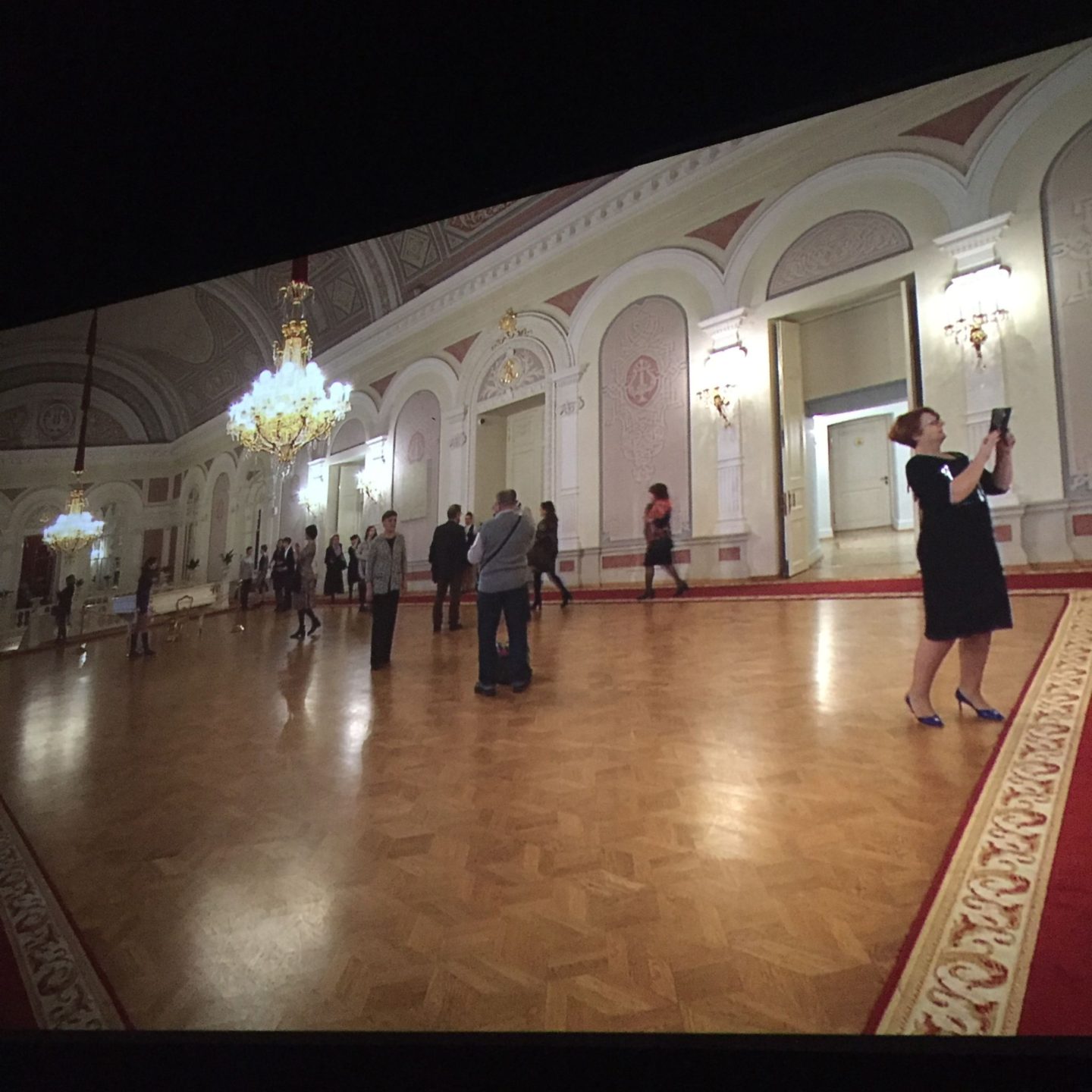
ACT 3
This act is filled with the variations and the Pas de Deux that are most iconic for this ballet. The acting and storyline telling is light as it’s the wedding scene and really the end of the story. The Bolshoi’s version includes putting the first bridesmaid variation between the pas de deux and the variations, and then the second before the coda. I’m sure that this is to give the dancers a chance to breath after the intensely difficult pas de deux, and can be seen in versions with other companies. Personally, I did find that the second bridesmaid’s variation, which is slower and lower energy, between Kitri’s variation and the coda felt a little out of place. I feel that, musically and energetically, the coda fits in perfectly after the variations, and this added waltz made the energy drop before drastically picking it back up again in the coda. The Bolshoi’s version is also very speed driven. Kitri’s variation is less centred around high legs and huge jumps, but more on the speed of the movements and the precision in that. As Kitri, Ekaterina Krysanova pulled out of the coda with 10 double fouettés and then finished of the classic 32 fouettés with confident and lightning fast turns.
Overall, I thoroughly enjoyed the ballet. I knew I would, as I love Don Quixote. It definitely adds something more to the ballet to have it set on the historic stage. I came home and immediately went to watch whatever other versions were posted on youtube, and the variety in this ballet is incredible. But in my heart will always be Paloma Herrera and Angel Corella dancing this together.
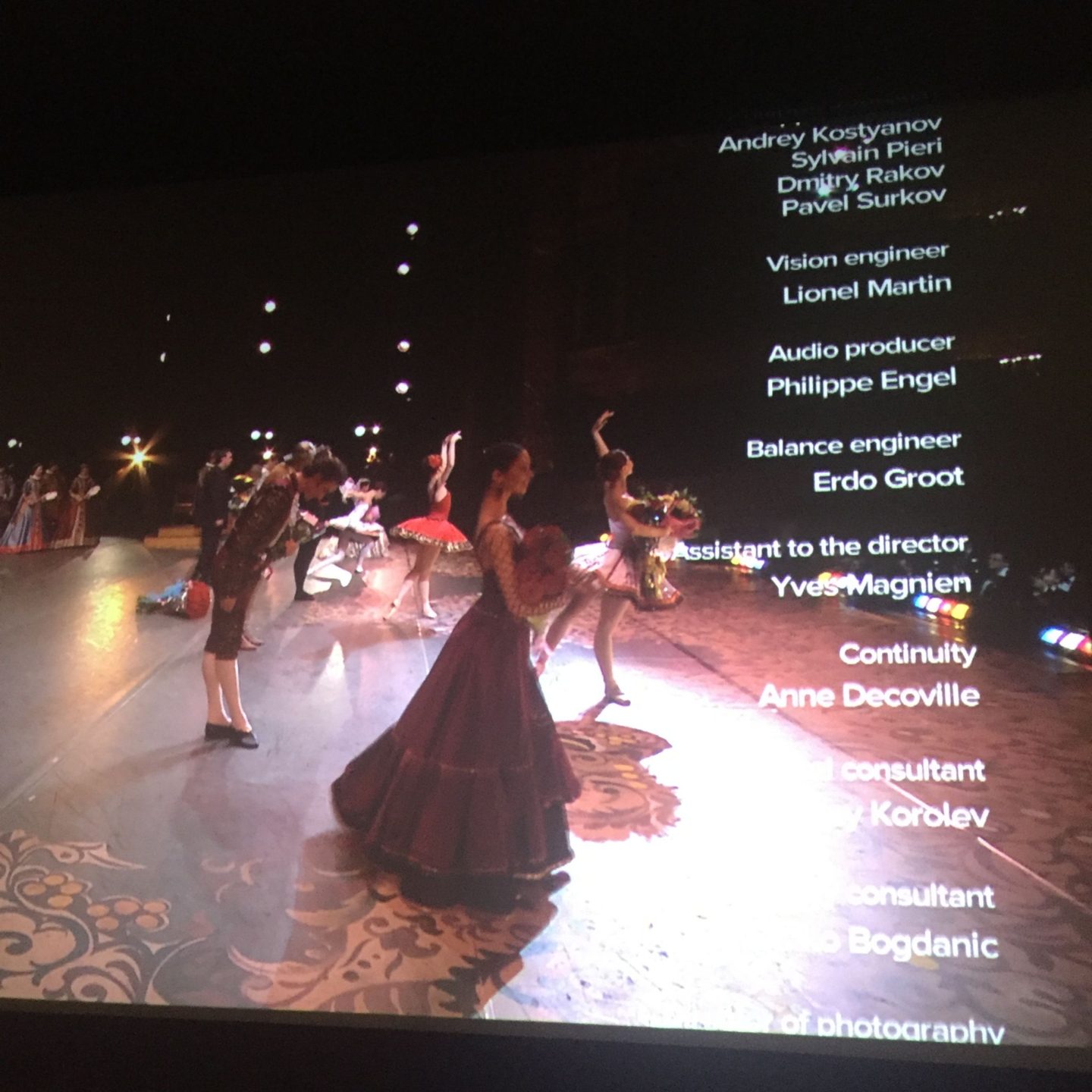
Cineplex cinemas will be showing this ballet once more in theatres on December 8th. You can find more information here. The next ballet in the line up is the ever classic The Nutcracker on December 23rd and 24th.
What did you think of the Bolshoi’s Don Quixote cinema relay?